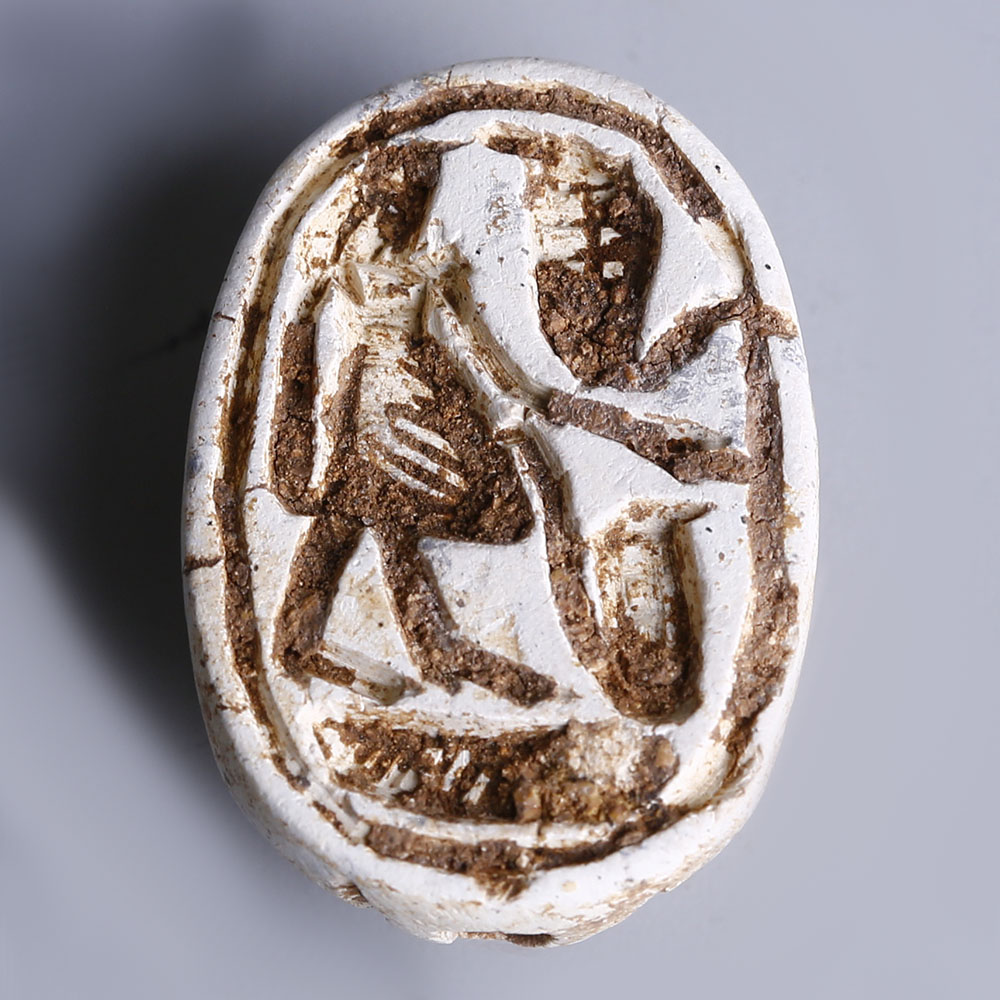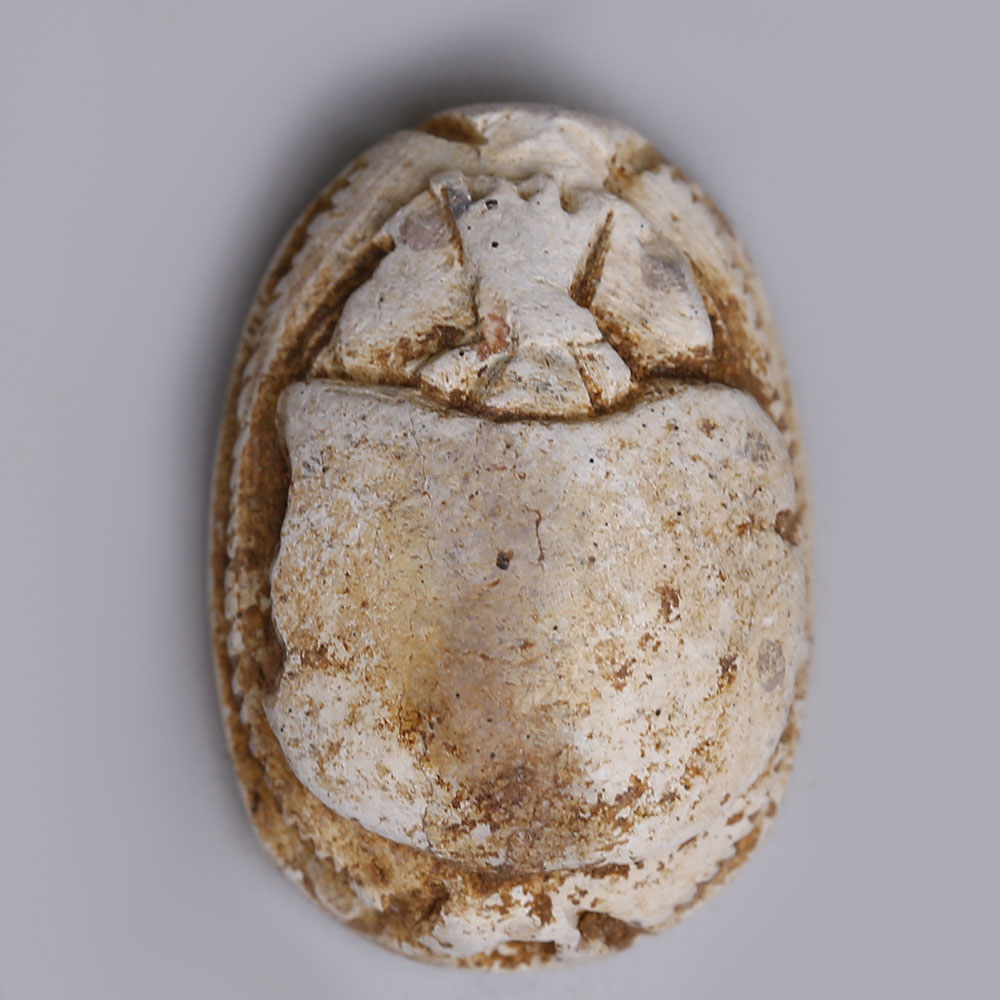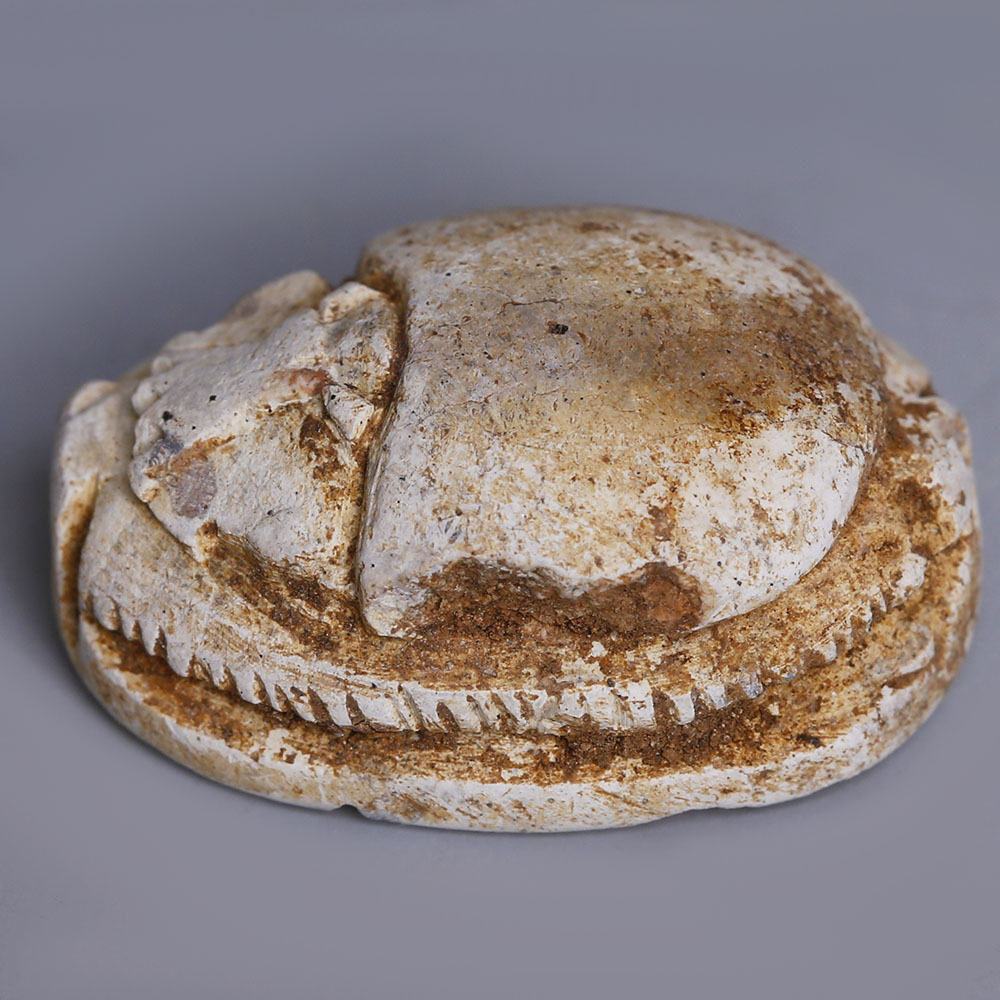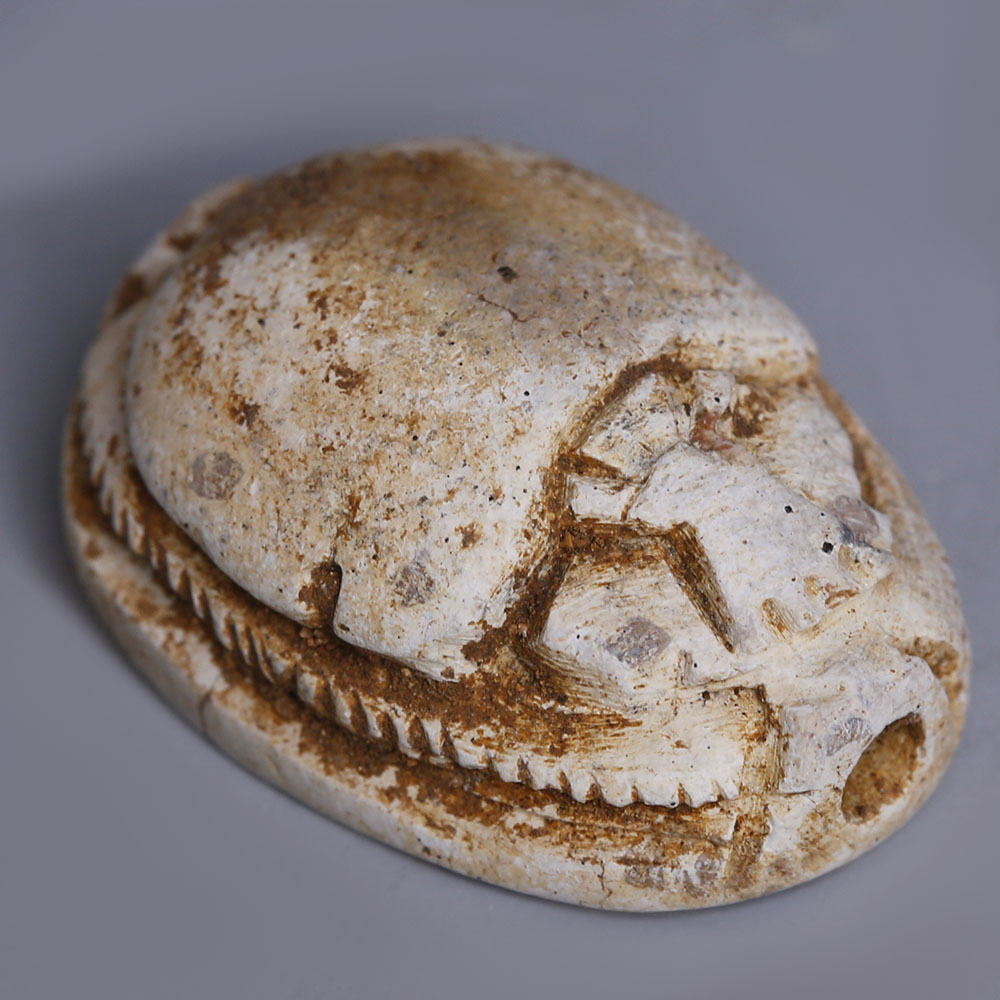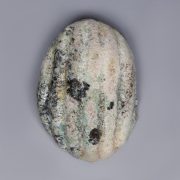Such scarabs, depicting a standing figure and flanked by the uraeus were exceedingly popular in the Second Intermediate Period, produced from 1700 – 1500 BC. This period is marked by Hyksos rule in Egypt and such scarabs show a definite Canaanite aesthetic. Whilst scarabs from this period had a limited specific meaning, the hieroglyphs depicted suggest artists were very much aware of their apotropaic values.
To find out more about Ancient Egyptian amulets please see our relevant blog post: Egyptian Amulets and their Meanings.
